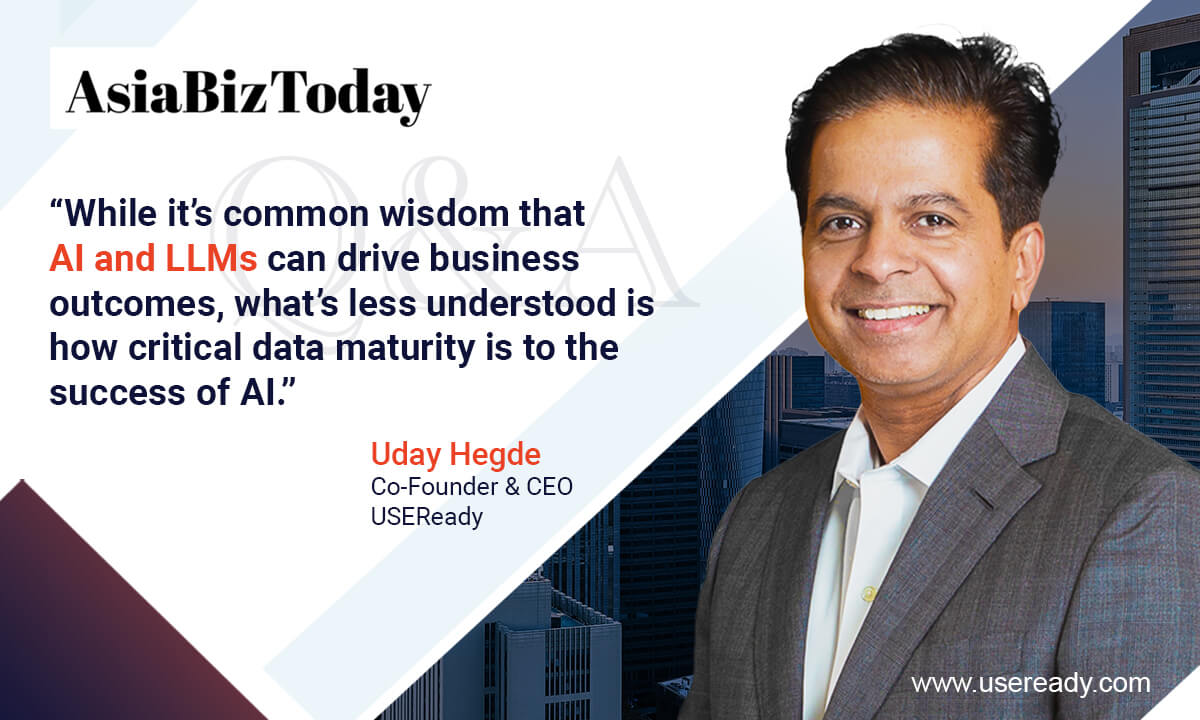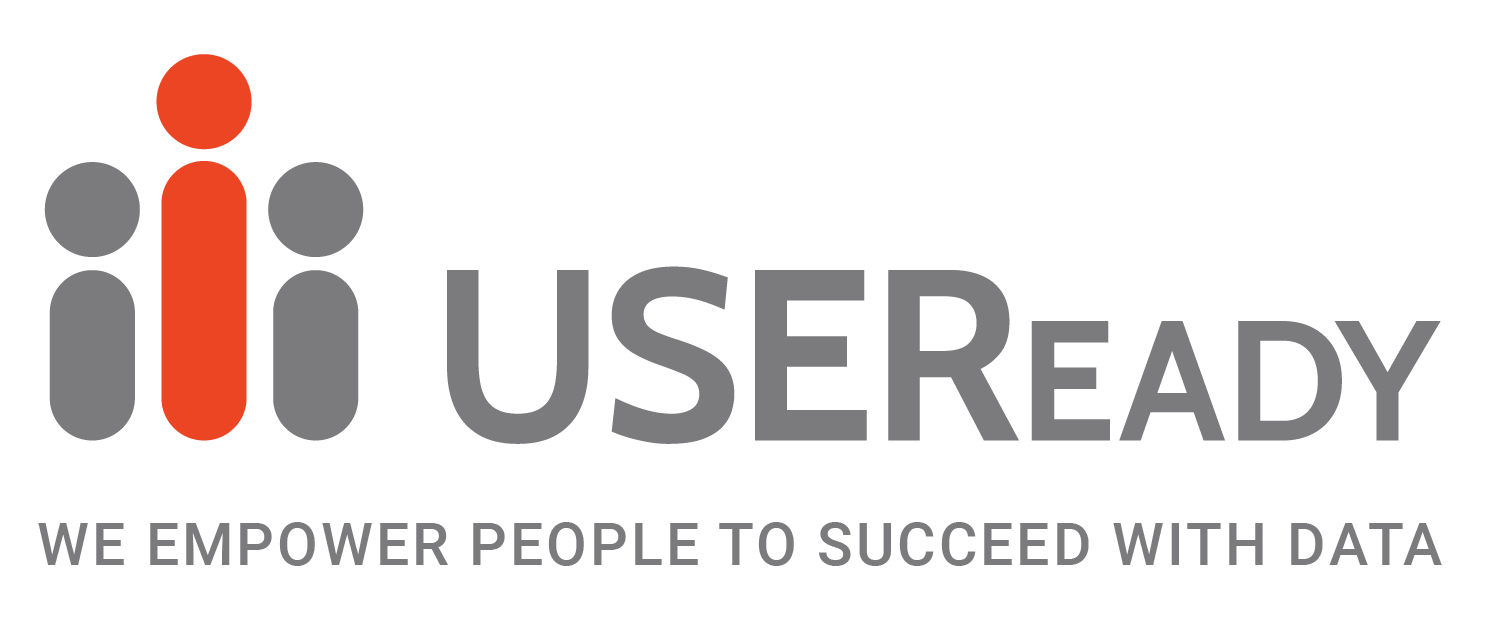With the goal of democratizing data and making it available and useful to everyone, Uday Hegde co-founded USEReady in 2011. At USEReady, which has won numerous awards for Tableau partner of the year, he has played a key role in fostering a culture of self-service, community, and data democracy.
Through USEReady, businesses can turn their data into a competitive advantage by gaining access to strategies, tools, capabilities, and capacity. With unique models centered around data, analytics, and visualization, the company represents contemporary Chief Data & Analytics Officers (CDAOs) of Fortune 500 companies as a reliable partner on their migration, optimization, and modernization journeys.
Utilizing its domain experts in visual analytics, cloud data engineering, business intelligence (BI), artificial intelligence (AI), decision intelligence, and product engineering, USEReady strengthens its ability to deliver solutions and ensures that clients receive value-driven results.
Under Uday’s direction, USEReady has expanded to over 450 staff members working out of offices in the United States, Canada, India, and Singapore. The company has assisted hundreds of clients, including twelve Fortune 500 businesses in the financial services, healthcare, retail, and educational sectors.
As an alumnus of IIIT Bangalore, he is also a board member of the institute and a mentor to many aspiring entrepreneurs. In an exclusive chat with AsiaBizToday, Uday shares his passion for data, cloud, and artificial intelligence. Excerpts:
Q: USEReady has been in data and analytics for over a decade. That’s a long time to be in a space where the evolution cycles are extremely short. How have you kept pace?
A: We have a GTM strategy team and an internal Learning & Development program called “USEReady University”. Every year we review our offerings, what’s working in the market, and opportunities to optimize and perform a ruthless prioritization exercise. We categorize our work into expansion and exploration areas. We invest in both expansion and exploration but manage them in different cycles.
We also encourage our employees to stay up-to-date with the latest trends and tools through training and professional development opportunities. In fact, it’s something that we’ve made a part of employee KRAs. So essentially, by staying agile and adaptable, we’ve been able to keep pace with the evolution cycles and continue to deliver value to our clients.
Q: And as to your broader claim of helping businesses improve their decision-making processes, what metrics do you use to measure the success of your offerings?
A: To measure with metrics, we need to establish baseline metrics first. We call it the process of establishing a blueprint. We have primarily three solution playbooks called Migration Optimization and Modernization (MOM). Each playbook has a specific set of benchmark metrics to measure whether we are successful in our offerings. While migration and optimization can have a fixed set of metrics, modernization is an ongoing journey. We look at one as a “rear view” set of metrics and another as “windshield” set of metrics.
Rear view set of metrics is descriptive and inquisitive in nature. The Windshield set of metrics are predictive and prescriptive in nature. By performing an extensive transformation value analysis, we can target the key business drivers, benefits, and outcomes desired.
Q: Since the investment from Abry Partners, you’ve launched Pixel Perfect, MigratorIQ and Decision Intelligence. What do these proprietary offerings do to your portfolio, and how do they contribute to transforming the analytics landscape?
A: Our customers are facing a lot of headwinds due to the economic, business, AI, policy, and data challenges in the market. Our mission is to help them be successful in their journey. Based on a solution playbook that we call MOM (Migration Optimization and Modernization), we developed our proprietary solutions, which are unique accelerators and software assets. For migration, we have MigratorIQ that simplifies the journey of migration. This is like using power lifts and other power tools one uses during a move or migration. For modernization, we have Decision Intelligence frameworks like AI Blueprint, Pixel Perfect etc., which help customers establish a clear ROI for modernization. For example, an AI blueprint should be one of the first goals of every organization that wants to stay beyond two years. Pixel Perfect solves age-old regulatory reporting problems at a fraction of the cost of leveraging modern cloud technologies.
Our investment thesis is to identify areas that are not addressed by incumbents and invest in them. It creates a perfect win-win situation for us and our customers. In a nutshell, our proprietary offerings help our customers solve the complex challenges of data analytics landscape that exists today.
Q: What’s the rationale behind your accelerator-based approach for migration, optimization, and modernization?
A:. Our accelerator-based approach is designed to help our clients achieve their data and analytics goals more quickly and efficiently. We’ve developed a suite of accelerators that are designed to streamline the migration, optimization, and modernization processes. It’s part of a solutions framework that we fondly refer to as MOM, short for migrate, optimize, modernize. These accelerators are pre-built, highly configurable offerings that take out the manual element and lower the cost and time of data or platform modernization projects via automation while also improving the quality of the result.
Q: Pixel Perfect has been core to your “hyperautomation” offerings. With increased interest in no-code AI, how do you see this solution evolving?
A: I think Pixel Perfect is extremely well-suited to adapt to the growing no-code AI trend. It is already a robust reporting and bursting tool, and we are currently in the advanced stages of integrating AI capabilities into the platform. AI brings a set of capabilities that were historically addressed using a rules-based approach. We are switching it to model-based solution. Model-based solutions are superior because Large Language Models (LLMs) solve the issue more comprehensively without the need to tweak the rule for every scenario. A simple example could be masking personally identifiable information. LLMs can detect such information in any language and any document format be it text, PDF, cross-tab, video, voice, etc. This would not be possible with a rule-based solution.
Q: You were recently named a leader in generative AI, and you tout an “Intelligent Enterprise” vision leveraging private, trusted, and responsible AI. What would that look like on the ground?
A: Our vision for an “Intelligent Enterprise” is one in which organizations can harness the power of AI to drive better business outcomes. While it’s common wisdom that AI and LLMs can drive business outcomes, what’s less understood is how critical data maturity is to the success of AI. We believe Data Maturity precedes AI maturity. Many organizations don’t have a well-established data program that is aimed to support AI journey. This means not having a clear data blueprint for Data Capture, Storage, Cleansing, Modeling, Tracking, Governance, Security. Organizations are stuck with legacy tools that are not designed for Cloud, Modern data stack making it harder to solve. Without a data foundation, purchasing AI tools is no use. Organizations end up supplying their valuable data to software firms that will further lock them up. If what happened to brick-and-mortar retailers from e-Commerce players like Amazon is an indication, AI is going to many orders of magnitude lethal for businesses.
And this is why we believe AI should be private, trustworthy, and responsible. Private AI ensures that sensitive data is protected and secure, while trustworthy AI ensures that the insights generated by AI are accurate and reliable. Responsible AI, as you can well imagine, ensures that AI is used ethically and in a way that benefits society as a whole.
Any business aiming to stay beyond a few years needs to think about getting their Data and AI blueprint ready. We call those enterprises “Intelligent Enterprise”.
Q: Increasingly, we hear about the democratization of data, analytics, and AI. Is enterprise-level AI mature enough for wide adoption?
A: The short answer is “it depends.”. Enterprise-level AI can be classified into two – Gen AI (Generative AI) and AGI (Artificial General Intelligence). While Gen AI is relatively more mature than AGI (which, in my guess, is in nascent stages; nobody truly knows), the community believes AGI is right around the corner.
We believe that Gen AI is ready for enterprise-level adoption. However, it’s important to approach AI adoption strategically. This means focusing on data first, identifying key drivers to ROI and identifying use cases that are linked to organizations ROI goals. We recommend performing a Transformation Value Analysis to establish those goals that help establish the ROI. This exercise should help establish an AI blueprint.
There are several opportunities within an enterprise to adopt AI. A simple example is sales team transformation using the power of AI to learn how sellers are selling: – Are they selling the right products at the right price point in a manner that resonates with the prospect? Such an approach can easily scale the throughput of an existing sales team by several orders of magnitude. This has both top-line and bottom-line benefits: increased sales productivity means more revenue and optimized sales motion means less waste in SGNA.
Q: Looking 3-5 years out, what emerging technologies or market shifts most excite you?
A: We are at the cusp of a breakthrough in AGI (Artificial General Intelligence). If AGI becomes real in 3-5 years, which is likely, then our lives will change forever. Deep personalization is most exciting to me. We call this deep personalization “userization” a word I borrowed recently. The positive side of personalization is that we will see a better experience in every walk of life, also hopefully less corruption (because everyone knows), and the darker side is less privacy and risk of theft or taking advantage of the ignorant.
Being the optimistic person that I am, the personalization of everything excites me.
Q: Up until now, USEReady has focused exclusively on the North American market. Can you discuss your strategy for the Asian market, especially in Singapore where you have an office?
A: With the market forces that exist today, organizations face global pressure. Every prospect with whom I have interacted within the ASEAN market has the same needs as North American customers. This realization prompted us to expand our market. We are entering these markets through partners. We have established partners in Japan and India that have knowledge of the local market, and we support them with our innovation. Collaboration to win is our strategy for the ASEAN markets.
We’re also investing in our team locally to support our partners and actively recruiting top talent to help us drive growth and innovation in the region. We believe that our focus on innovation, quality, and customer service will hold us in good stead in the Asian market.
Reach out to us at marketing@useready.com
Originally published in: AsiaBizToday.com












 Media Coverage
Media Coverage Press Release
Press Release